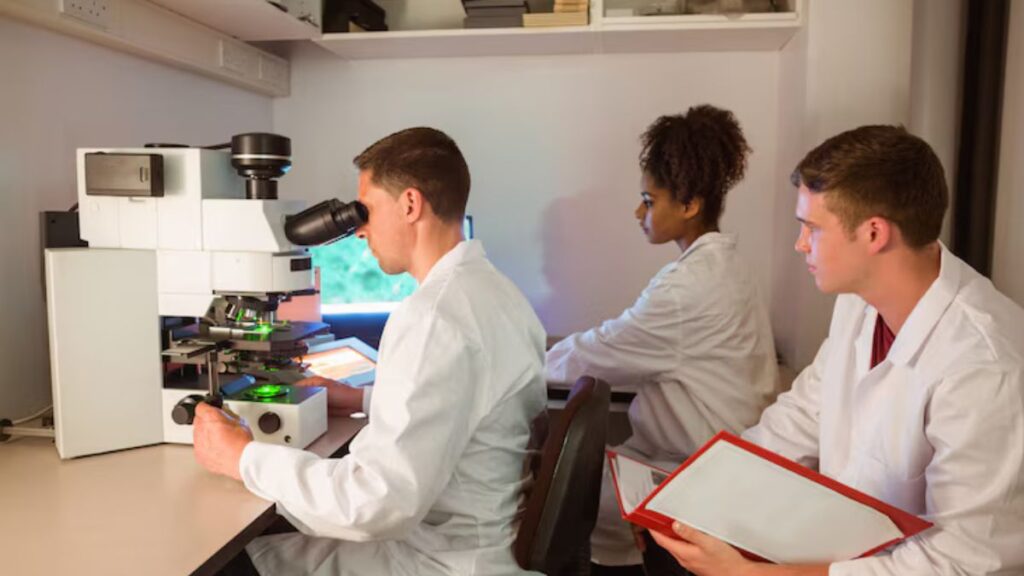Flow cytometry uses fluorescent markers to study cells from various aspects, such as size, granularity, and the expression of specific surfaces. Because of its ability to provide quick quantitative information about cellular traits, flow cytometry has become an integral part of industrial, clinical, and research fields. Today, these tests are conducted to assay cell proliferation, detect cytokine, sort cells, etc. A typical experiment starts with sampling the suspended cells marked with fluorophore-conjugated antibodies to target specific cellular markers. Researchers then take the sample and place it into the flow cytometer instrument. The equipment contains a fluidics system to organize the cells in a straight line while exposing them to a detection zone.
When the cells face the laser beam, the light is dispersed, causing tagged fluorophores to glow or light up. Within flow cytometry analyzers, mirrors and optical fibers point the laser beam at the cells and gather the fluorescence they emanate to help detectors convert them into electrical signals. Under controlled experimental environments, researchers use this technique to differentiate and profile cell populations. For clarity, let’s explore flow cytometry’s application in the healthcare sector.
The use of flow cytometry in medical settings
The process of conducting a test has already been discussed above. Lab staff do these tests, and pathologists construe the meaning of the results. These tests run on different bodily fluids, such as bone marrow, blood, and tissues. Patients are recommended to take these tests by oncologists or doctors, who collect the samples and share them with the pathology lab. These tests can be recommended to study the cells in the body to detect immune and cancer cells. With the help of an advanced analyzer, they can detect blood cancers like lymphoma and leukemia. Blood disorders can also be identified. If someone is suffering from hereditary immune deficiencies or HIV, they can also be recommended the test.
The flow cytometry test results
These tests often take a week time to put together the results. The pathologists check cell antigens to analyze the cell’s health and maturity level. If the cells reveal any abnormal pattern, it can be linked with diseases like lymphoma, multiple myeloma, and leukemia. A doctor reviews the report presented as raw data that a flow cytometer analyzer has assimilated. The results are interpreted along with considering a patient’s medical record, symptoms, and other physical examinations. Based on this, the healthcare can determine the treatment procedure.
Benefits of flow cytometry
These tests are considered more efficient than several other techniques used in cell population characterization. Or, they can be combined with other examinations for a better analysis. Still, a flow cytometer can stand out for its ability to rapidly analyze the end number of cells. Each cell can be studied from multiple angles. Even rare subpopulations can be examined using the system’s multiplex capabilities. Typically, these tests are suitable for cells suspended in blood. However, solid tissues can also be tested. With advanced analyzers, you can also get imaging facilities or features nowadays.
Nevertheless, specialized analytical equipment like a flow cytometer can consist of three integral parts: optics, data analysis, and fluidic systems. Fluidics regulate the sample movement while tracking various attributes. The optics help with signal detection using the power of mirrors, excitation lasers, fiber optics, detectors, and filters. As expected, data analysis involves processing light signals and changing them into readable data for the system to interpret.
If you want to read more, visit our blog page. We have more topics!







